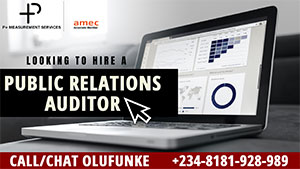North Carolina is commencing the U.S. political race today as it conveys voting forms by post to enlisted voters.
It is the first state that started sending mail ballots to those who have already requested them, according to the National Council of State Legislatures.
This is just about 60 days before Election Day on 3 Nov. A few different states will join the state mid-September.
North Carolina permits any enrolled voter to cast a ballot via mail, without them requiring a reason.
On Thursday North Carolina State Board Executive Director Karen Brinson Bell cautioned voters that casting a ballot twice, as being proposed by President Donald Trump, is a felony.
“Electronic poll books with information about who has already voted are used at every early voting site. If a voter tries to check in who has already voted, they will be prevented from voting a regular ballot,” Karen Binson Bell said in a statement also published on Twitter.
It is a Class I felony under North Carolina law to vote twice in the same election, and state election officials employ a number of processes to prevent that type of fraud.
According to Business Insider, a total of 643,000 voters have requested ballots for the presidential election as of Friday, based on University of Florida professor Michael McDonald’s analysis of state data .
Mail ballot request rates already substantially outpace 2016 levels of mail voting, the election scholar found.
So far, over 9% of North Carolina’s approximately 7 million registered voters have requested a ballot.
In 2016, 3.5% of North Carolinians who voted in the presidential election cast their ballots by mail, according to US Census data.
As of Sept. 3, the number of requests is 16 times higher than the approximately 37,000 North Carolinians who requested mail ballots by the same date in 2016, according to analysis from Catawba College political science professor Michael Bitzer, who has been tracking North Carolina’s ballot request data throughout the summer.
There’s also a stark partisan divide in the makeup of those who have requested their ballots so far.
Per McDonald’s analysis , 52% of the requests received as of Thursday came from registered Democrats, 31% from unaffiliated voters, and 16% from registered Republicans.
At the same time in 2016, 37% of requests came from Democrats, 28% from unaffiliated voters, and 35% from Republicans.
This year, North Carolina, which accounts for 15 electoral college votes, is a hotly-contested battleground in the presidential race between President Donald Trump and Democratic nominee Joe Biden.
There’s also a highly competitive US Senate race between first-term Republican Thom Tillis and Democrat Cal Cunningham, rated as a tossup by most major election forecasters; a gubernatorial election between incumbent Democratic Gov. Roy Cooper and Lt. Gov Dan Forest; US House elections under the state’s newly-drawn congressional map ; and several key legislative races that could decide control of both houses of the state legislature.
September 4 also marks the first day that voters in all 50 states will be able to request their mail ballot. Mississippi, the latest state to begin taking absentee ballot requests, will also start accepting applications.
Several other states will follow North Carolina and begin sending out ballots starting in mid-September to those who have requested them.
And some, including Michigan, Minnesota, Pennsylvania, and Virginia, will start early in-person voting as early as the week of Sept. 18.
The first three hold a form of early voting called “in-person absentee” voting where a voter can cast a paper ballot at their local election office instead of at a traditional polling place.
Forty-five days before the election, or September 19 this year, marks the deadline for states to send absentee ballots to overseas and military voters covered under the Uniformed and Overseas Citizens Absentee Voting Act.
At a Wednesday event in North Carolina, Trump, who has spent the last several months spreading misinformation that mail voting is inherently fraudulent, suggested that voters should attempt to vote twice , by mail and then in-person on Election Day to test whether the state’s voting system can detect voter fraud.






